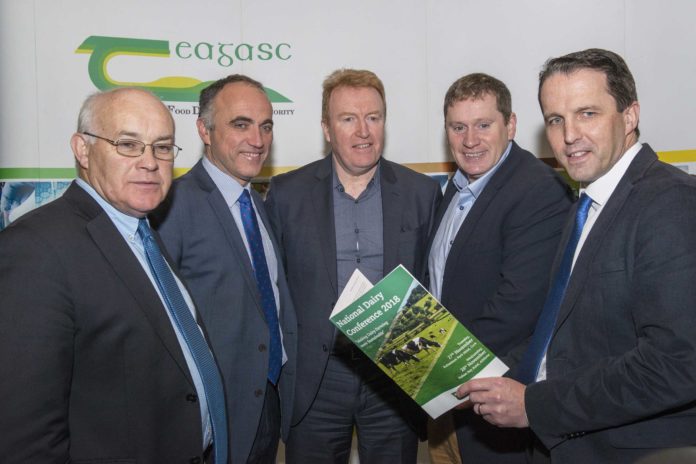
Weather risk is a reality of farming and extreme weather events have the capacity to cause major stress in the short term and damage viability over the longer term.
That was the message from Dr Joe Patton, dairy specialist Teagasc at the National Dairy Conference, which is taking place at the Rochestown Park Hotel, Cork on Tuesday, 27 November.
He said: “Dairy farming systems must build in resilience to weather shocks. The multiple weather events of 2018 stretched farm resources – cash, labour, forage and facilities. Underinvestment in labour and facilities, or the lack of a cash reserve, can leave the system exposed to shock or unexpected events.
"The impact of extreme weather events can be reduced by having a reserve of quality fodder on the farm to compensate for weather-induced reductions in pasture growth. Teagasc recommends that a reserve of 500 – 800 kg DM per cow be built up over time and maintained on a rolling basis.”
Dairy calf welfare remains underpinned by good farming, handling and transport practices. Natalie Roadknight from the University of Melbourne outlined to the audience the Australian and New Zealand systems for managing non-replacement dairy calves.
“Public perception of the dairy industry is an important consideration when contemplating options for non-replacement dairy calf management; bobby calf slaughter and cow-calf separation are key social licence risks, with consumers increasingly concerned over how animals are farmed. In the future, new technologies such as sexed semen or new systems of production, such as dairy bull beef or veal systems may have a role to play in managing non-replacement calves.”
Andrew Cromie, ICBF, outlined a dairy-beef index to rank beef bulls on profitability when mated to a dairy cow. The index is based on a sire’s estimated genetic potential to produce profitable, high quality cattle, born with minimal consequence on subsequent performance of the dairy dam.
Such an index should include traits related to calving performance, efficiencies of production, carcass merit in terms of yield and quality, as well as addressing current and futuristic societal demands.
Work undertaken to-date indicates considerable differences between active AI bulls in their dairy beef index value, with a difference of approximately €100 being observed amongst the bulls and breeds used widely within the national dairy herd.
ICBF and Teagasc are working towards the implementation of this new index for the spring 2019 breeding season.
A series of workshops for the dairy farmers attending the conference included: Workshop 1 – Managing our GHG and ammonia emissions targets; Workshop 2 – Grassland decisions made easy; Workshop 3 – Coping with the spring workload; Workshop 4 – Contract heifer rearing; Workshop 5 – Building fodder reserves in 2019; Workshop 6 – Making our dairy farms better places to work.







